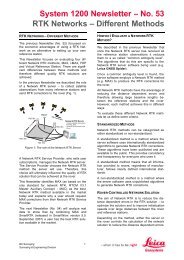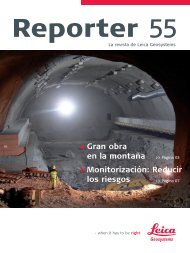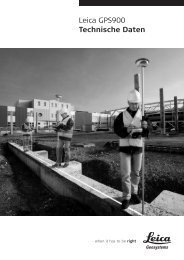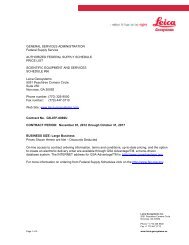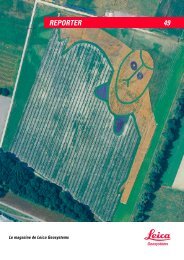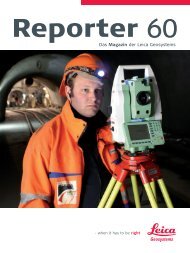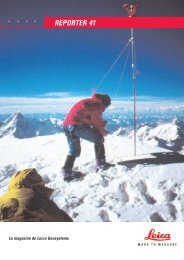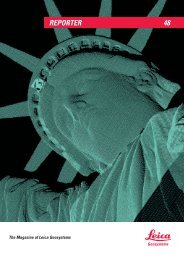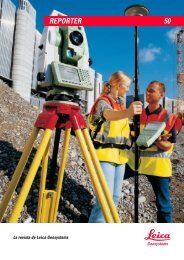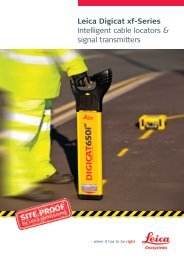Reporter No 60, May 2009, English (PDF 2,58 MB) - Leica ...
Reporter No 60, May 2009, English (PDF 2,58 MB) - Leica ...
Reporter No 60, May 2009, English (PDF 2,58 MB) - Leica ...
Create successful ePaper yourself
Turn your PDF publications into a flip-book with our unique Google optimized e-Paper software.
priate crew then receives the required re-alignment<br />
procedures from QA/QC.<br />
The laser scan verification is repeated at each module's<br />
construction hold point, typically at the completion<br />
of a defined level. Follow-up scans at the<br />
second, third and fourth levels of a module provide<br />
further verification that variances found during previous<br />
scans have been corrected. The final report is<br />
then placed within the deliverables to the client.<br />
Less risk, speedy support<br />
Typically, the structural crews can erect an averagesize<br />
module in a little over a week. The combination<br />
of high definition scanning and reflectorless total<br />
stations has allowed Cianbro to minimize its field<br />
engineering crew to four team members, who support<br />
more than 450 craftspeople in the construction<br />
of all 53 modules. The scanning technology has also<br />
helped minimize the risk to field engineers on the<br />
busy fabrication site by eliminating the need to climb<br />
modules to gather position data. With the high definition<br />
laser scanner, they can collect all necessary<br />
data from the ground. <strong>No</strong>t only is the risk eliminated,<br />
but the time to collect the data is only a fraction of<br />
the traditional collection methods that are carried<br />
out by much larger field crews. By reducing the time<br />
needed to collect data, the field engineering crew is<br />
less apt to impact the production yield of the associated<br />
crafts who erect the modules.<br />
By the end of <strong>2009</strong>, all 53 modules will be completed<br />
and shipped to Port Arthur.<br />
About the authors:<br />
Seth Goucher is a chief field engineer for Cianbro<br />
Corporation and a third generation Cianbro employee<br />
residing in Maine. He holds a Bachelor of Science<br />
degree with an emphasis in forestry from Unity College.<br />
Goucher is credited with introducing Cianbro to<br />
the spatial data collection capabilities of HDS technology.<br />
Brayden Sheive is a field engineer and HDS<br />
technician with Cianbro Constructors. He recently<br />
graduated from the University of Maine with a Bachelor<br />
of Science in Construction Management Technology<br />
Engineering with minors in Survey Engineering<br />
Technology and Business Administration.<br />
This article is a reprint of “The American Surveyor”,<br />
March <strong>2009</strong>.<br />
The Global Magazine of <strong>Leica</strong> Geosystems | 17



